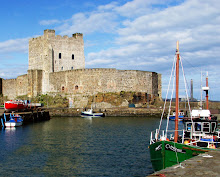
Setting up this blog started me thinking again about digital cameras and megapixels. My hobby is photography and I switched from film to digital back in 2002. My first digital camera was an Olympus C-2100UZ. It had a 2-megapixel chip but sported a large 10x zoom lens. That lens was stabilized making it easier to take sharp photographs at the longer zoom range. I used that camera for several years both for pleasure and at work. I discovered that 2 megapixel photographs were the ideal size for inclusion in reports. Printed at 300 pixels per inch, two photographs from that camera could fit perfectly onto a standard 8.5 x 11 inch page and still leave room for headings and titles. Equally important, the zoom lens allowed each picture to be properly composed in the viewfinder. None of those precious pixels were wasted.
Time, technology and pixel envy wait for no man and my next camera was another Olympus; the legendary E-10. This was a step-up in quality from the C-2100UZ. It had 4 megapixels and another wonderful lens. However, the zoom was only 4x. Those extra pixels were wonderful and when the image used every one I was able to make large detailed prints. Several 11 x 14 inch prints taken with this camera grace the walls of my office. When the subject was not perfectly framed, those extra pixels gave limited ability to correct the composition. Unwanted portions could be cropped and still leave enough pixels to illustrate an email or print a decent snap-shot.
Today, I use a Pentax K10D digital single lens reflex camera. I bought my first Pentax film camera in 1977 and I have remained a fan of the brand ever since. The K10D is everything I need. It also has backward compatibility to over 24 million past and present Pentax lenses. I know I will never really outgrow that system. The SLR format lets me select (or covet) the best lens for the composition and 10 megapixels give me great latitude if there is a need to crop the image in the “digital darkroom”.
The net result is that today my photographs are usually blessed with too much information. Yes, those extra pixels let me make very large prints; and I have used them all - about three times! Normal 4 x 6 prints don’t need any more pixels in 2008 than they did in 2002 when I had a 2 megapixel camera. Neither do illustrations in reports for work. Many web sites (even the Pentax Gallery or photoSIG) positively prohibit large files and common courtesy requires that the files be made smaller before the photos can be attached to an email. Now, instead of searching for the best software to enlarge my files I find that I am using similar programs to efficiently delete the pixels I have spent so much time and effort trying to faithfully record. Technology advances bring some strange problems - especially as wild horses would not make me give up those extra pixels. I just know they will all come in useful next time I use the camera!
Time, technology and pixel envy wait for no man and my next camera was another Olympus; the legendary E-10. This was a step-up in quality from the C-2100UZ. It had 4 megapixels and another wonderful lens. However, the zoom was only 4x. Those extra pixels were wonderful and when the image used every one I was able to make large detailed prints. Several 11 x 14 inch prints taken with this camera grace the walls of my office. When the subject was not perfectly framed, those extra pixels gave limited ability to correct the composition. Unwanted portions could be cropped and still leave enough pixels to illustrate an email or print a decent snap-shot.
Today, I use a Pentax K10D digital single lens reflex camera. I bought my first Pentax film camera in 1977 and I have remained a fan of the brand ever since. The K10D is everything I need. It also has backward compatibility to over 24 million past and present Pentax lenses. I know I will never really outgrow that system. The SLR format lets me select (or covet) the best lens for the composition and 10 megapixels give me great latitude if there is a need to crop the image in the “digital darkroom”.
The net result is that today my photographs are usually blessed with too much information. Yes, those extra pixels let me make very large prints; and I have used them all - about three times! Normal 4 x 6 prints don’t need any more pixels in 2008 than they did in 2002 when I had a 2 megapixel camera. Neither do illustrations in reports for work. Many web sites (even the Pentax Gallery or photoSIG) positively prohibit large files and common courtesy requires that the files be made smaller before the photos can be attached to an email. Now, instead of searching for the best software to enlarge my files I find that I am using similar programs to efficiently delete the pixels I have spent so much time and effort trying to faithfully record. Technology advances bring some strange problems - especially as wild horses would not make me give up those extra pixels. I just know they will all come in useful next time I use the camera!


No comments:
Post a Comment